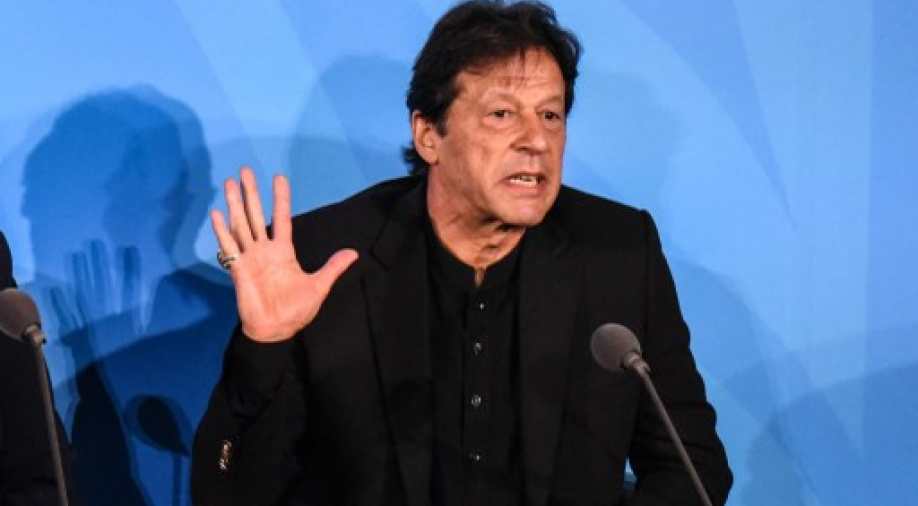Islamabad: Cash-strapped Pakistan contracted USD 10.447 billion worth of new foreign loans from multilateral institutions and commercial banks during the fiscal year 2019-20, almost one-fourth higher than previous year’s USD 8.4 billion, according to a media report.
According to the Annual Report on Foreign Economic Assistance 2019-20 released by the Ministry of Economic Affairs, 99 per cent of the new commitments were for loans and the remaining 1 per cent in grant commitments, the Dawn News reported.
Out of the total new agreements of USD 10.447 billion, more than USD 6.79 billion financing agreements were signed with multilateral agencies, USD 3.463 billion with foreign commercial banks and USD 193 million with bilateral lenders.
The report said the high level of commercial financing worth USD 3.463 billion — accounting for 33 per cent of the total new commitments — had been secured from commercial banks to refinance maturing commercial debt during the year.
Asian Development Bank (ADB) emerged as the largest lender with new commitments of 30 per cent, followed by World Bank 22 per cent, Islamic Development Bank (IDB) 7 per cent and Asian Infrastructure Investment Bank (AIIB) 5 per cent.
These financial institutions extended financing of about 98 per cent of the total new commitments.
The report said that 69 per cent of the new commitments during FY 2019-20 were made under the category of budgetary support.
“This high level of budgetary support was secured mainly to offset socio-economic impact of COVID-19 pandemic and to meet the higher external financing requirements for external debt retirements,” it added.
About 26 per cent of the new commitments were allocated for project financing and 5 per cent for commodity financing.
The new commitments were higher than budgeted in view of the COVID-19 pandemic. An amount of USD 7.5 billion had been committed as budgetary support, of which USD 4 billion was committed by multilaterals as programme financing and the remaining from foreign commercial banks, the report said.
The major share (40 per cent) of new commitments was meant for transport and communication in FY 2019-20, followed by 19 per cent for health, 12 per cent for physical planning and housing, 10 per cent for rural development and poverty reduction, 9 per cent for power sector and 6 per cent for agriculture.
On the other hand, the total disbursement of foreign loans in FY 2019-20 amounted to USD 10.7 billion — slightly lower than USD 10.8 billion during the same period of FY 2018-19. Of these, 97 per cent disbursements were in the shape of loans and 3 per cent grants, the report said.
The disbursements included USD 6.5 billion by multilateral and bilateral lenders as compared to USD 4.1 billion last year, registering a growth of 59 per cent.
In addition, the government also raised USD 3.4 billion from foreign commercial sources to meet its external debt obligations and support the balance of payments.
Disbursements of USD 10.7 billion were mainly under the projects and programme loans or grants from multilateral, bilateral and financial institutions. This included USD 5.645 billion or 53 per cent of total disbursements from the multilaterals, mainly ADB, IDB, AIIB and World Bank.
An amount of USD 3,373 million or 32 per cent of the total disbursements was from foreign commercial banks mainly for refinancing of maturing commercial debt. Another USD 1.644 billion or 15 per cent of the disbursements was from bilateral lenders, particularly Saudi Arabia, China and the United Kingdom.
As of June 30, 2020, Pakistan’s total external public debt amounted to USD 77.9 billion, compared to USD 73.4 billion during the same period last year, showing a growth of 6 per cent.
The report showed total external public debt from three key sources — 51 per cent multilateral debt, followed by 31 per cent bilateral debt, including China’s SAFE deposits, and the remaining 18 per cent from foreign commercial banks and institutions, including Eurobonds and Sukuk.
After accounting for total repayments and fresh disbursements, net transfers to the government during FY 2019-20 amounted to USD 1.8 billion.
The report said the stock of external loans obtained via market-based instruments declined by USD 2.062 billion in bonds and commercial borrowing and the share of concessional external loans with longer maturity increased by USD 3.87 billion in multilateral and bilateral loans, showing a relative improvement in external public debt stock.
The report said the net transfers had remarkably declined after 2018. “Despite elevated level of external debt servicing, Pakistan has successfully discharged its record debt servicing during FY 2019-20 by successfully mobilising external resources and shifting focus from short-term commercial high-cost liquidity to long-term concessional flows,” it said, claiming credit for prudent external debt management and growing confidence of lenders.
The economic affairs ministry said that about 70 per cent of the total external public debt consisted of loans on fixed interest rates as of June 30, 2020, while the remaining 30 per cent loans were obtained on floating interest rates.
PT
